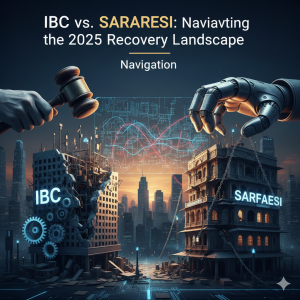Mergers and Acquisitions (M&A) have become critical instruments for corporate growth, global expansion, and strategic consolidation across jurisdictions. However, the legal landscape governing M&A varies significantly from one country to another, shaped by each nation’s regulatory philosophy, institutional framework, and corporate law traditions.
This blog provides a comparative overview of M&A laws in India, the USA, the UK, and Singapore, highlighting key similarities, distinctions, and strategic considerations for businesses and legal practitioners navigating cross-border transactions.
IN M&A Laws in India
Regulatory Framework
M&A in India is governed by a combination of company law, securities law, competition law, and sectoral regulations:
• Companies Act, 2013 – Governs mergers, demergers, amalgamations (especially for private/unlisted companies).
• SEBI (Substantial Acquisition of Shares and Takeovers) Regulations, 2011 (SAST Regulations) – Applies to listed companies.
• Competition Act, 2002 – Requires approval from the Competition Commission of India (CCI) for certain combinations.
• Foreign Exchange Management Act (FEMA) – Regulates cross-border transactions involving foreign investors.
• Income Tax Act, 1961 – Determines tax implications of mergers and asset transfers.
Key Features
• Approval of National Company Law Tribunal (NCLT) required for schemes of arrangement.
• SEBI regulations ensure transparency and investor protection in public M&As.
• Foreign investment norms apply sector-wise under FDI policies.
• Slower timelines due to NCLT involvement and regulatory clearances.
US M&A Laws in the United States
Regulatory Framework
M&A in the U.S. is governed by a mix of federal and state laws, with Delaware law often being the preferred jurisdiction:
• Securities Exchange Act of 1934 – Overseen by the SEC for public companies.
• Hart–Scott–Rodino Antitrust Improvements Act (HSR Act) – Mandates pre-merger filings with FTC/DOJ for large deals.
• State Corporate Laws – Delaware General Corporation Law (DGCL) is widely used.
• Industry-specific regulators may require additional approvals (e.g., banking, telecom).
Key Features
• Hostile takeovers are more common and legally permissible.
• Private contracts and shareholder agreements play a major role.
• Tender offers, reverse triangular mergers, and asset purchases are common structures.
• Pre-closing due diligence is exhaustive and transaction timelines are shorter.
GB M&A Laws in the United Kingdom
Regulatory Framework
The UK has a structured and codified framework for M&A, especially in the public space:
• Companies Act, 2006 – Governs company operations and mergers.
• The Takeover Code (City Code on Takeovers and Mergers) – Administered by the Takeover Panel; applies to listed companies.
• UK Competition and Markets Authority (CMA) – Reviews anti-competitive mergers.
• Financial Conduct Authority (FCA) – Regulates capital markets.
Key Features
• Mandatory offer thresholds (30% or more shareholding triggers an offer).
• Emphasis on equal treatment of shareholders.
• Strict disclosure requirements and bid timetables.
• Friendly takeovers are more prevalent than hostile ones.
SG M&A Laws in Singapore
Regulatory Framework
Singapore’s M&A regime blends efficiency, transparency, and investor protection:
• Companies Act, 1967
• Singapore Code on Take-overs and Mergers (Take-over Code) – Overseen by Monetary Authority of Singapore (MAS) and Securities Industry Council (SIC).
• Competition Act – Administered by the Competition and Consumer Commission of Singapore (CCCS).
• Singapore Exchange (SGX) Rules – For listed companies.
Key Features
• English common law foundation provides consistency.
• High level of procedural clarity and legal certainty.
• Strong emphasis on minority shareholder protection.
• Singapore’s tax regime supports M&A efficiency (e.g., no capital gains tax).
Key Comparative Highlights
| Aspect | India | USA | UK | Singapore |
| Regulatory Speed | Moderate to Slow (NCLT approval) | Fast, contract-driven | Moderate (Takeover Code governed) | Efficient and predictable |
| Hostile Takeovers | Rare | Common | Less frequent | Rare |
| Public M&A Regulation | SEBI SAST, Companies Act | SEC Rules, HSR Act | Takeover Code, FCA | SIC Takeover Code, SGX Rules |
| Foreign Investment | FDI Regulated (sector-specific) | Open but regulated (CFIUS scrutiny) | Open, EU/UK competition laws apply | Very open, strategic sectors watched |
| Competition Oversight | CCI | FTC, DOJ | CMA | CCCS |
| Court Involvement | NCLT-intensive | Minimal unless disputes arise | Limited unless challenged | Minimal |
Conclusion
While the core objective of M&A growth and strategic consolidation remains consistent across jurisdictions, the regulatory pathways and legal expectations differ significantly. India’s M&A landscape is more regulator-driven, while jurisdictions like the USA emphasize contractual freedom and market dynamics.
For businesses and legal professionals operating in multiple jurisdictions, understanding these differences is critical to structuring deals efficiently, avoiding regulatory pitfalls, and ensuring compliance.
At Narendra Madhu Associates, we assist clients in cross-border mergers, due diligence, transaction structuring, and legal documentation tailored to multi-jurisdictional compliance. Whether you’re an Indian company looking to expand abroad or a foreign investor entering India, we ensure your M&A journey is smooth, strategic, and secure.



